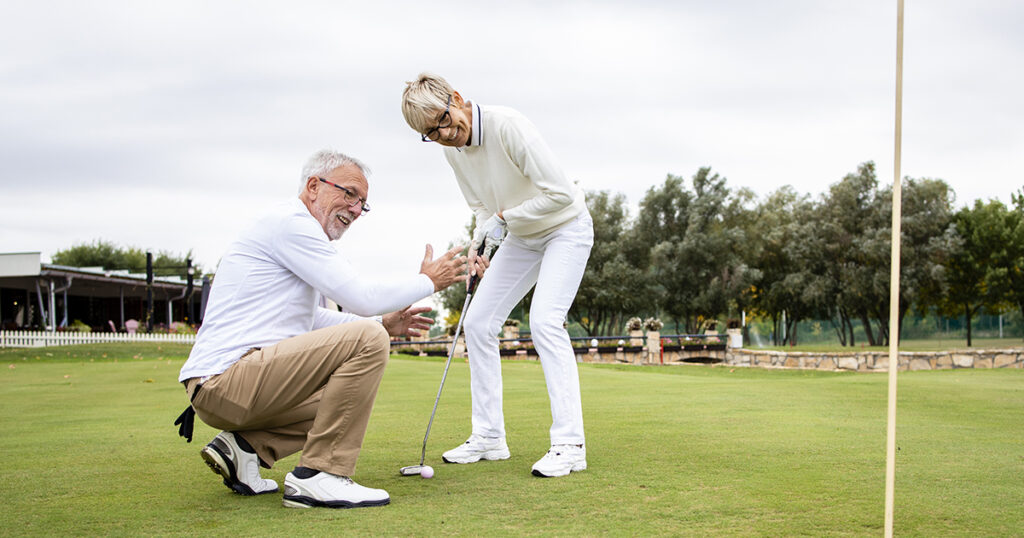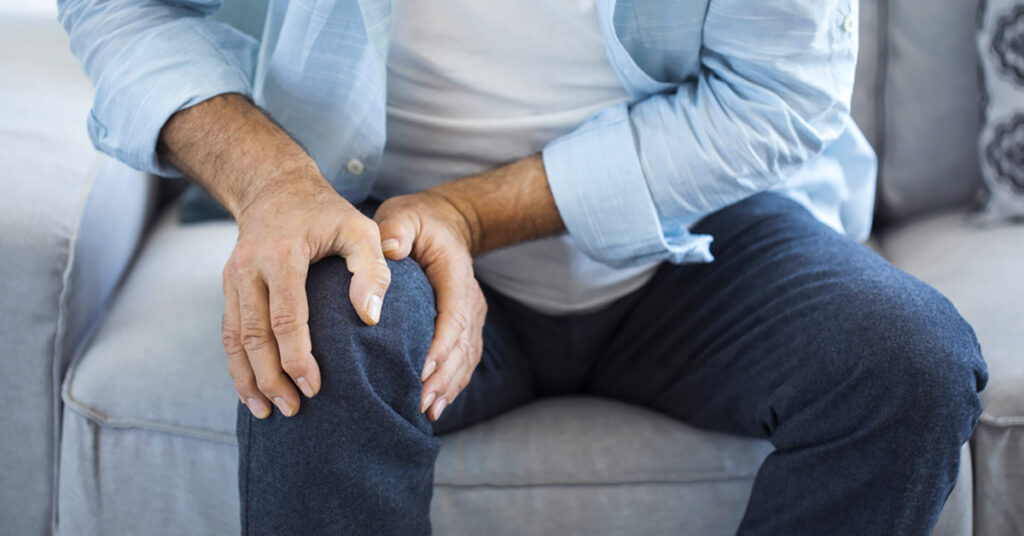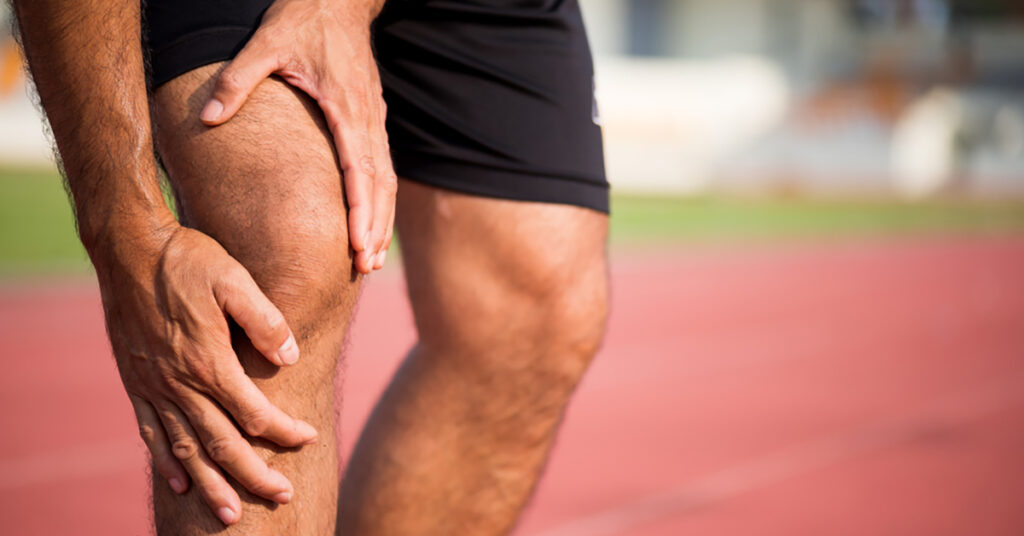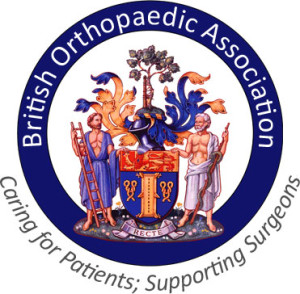Common causes of knee pain
Your knees go through a lot on a daily basis. As well as supporting your weight, they withstand a wide range of movements and stresses from activities such as running and dancing. Anyone who has experienced knee pain will appreciate how essential your knees are for everyday movements such as walking, sitting and standing.
Knee conditions – many of which involve pain and stiffness – can have a big impact on your quality of life, so it’s important to take good care of your knees and seek help if you do experience any problems. Sometimes, a prompt diagnosis can help to avoid more invasive treatment later on and get you back on your feet as quickly as possible.
In 2017, the National Joint Registry recorded 115,462 knee procedures, giving you an indication of how common knee complaints can be. Here are some of the most common culprits.
Foot problems
Knee pain can sometimes be a secondary issue, caused by a foot problem. As we age, the muscles in our feet degenerate. This can affect the mechanical weight-bearing axis around the knee joint, ultimately resulting in knee pain.
Sometimes it’s possible to resolve this type of knee pain by treating the root cause – your feet. If your condition is more advanced, your knee may need help too. Treatments can include physiotherapy, cortisone injections, arthroscopy and knee replacement.
Osteoarthritis
Osteoarthritis affects millions of people living in the UK. It’s most often found in the knee joint and is caused by ‘wear and tear’. Sometimes it can develop as a secondary condition, following a cartilage injury. In both cases, the cartilage that protects your knee joint wears down, and your thighbone and shinbone eventually rub together. Not only is this painful, but it can cause stiffness and swelling. Some patients also experience a grinding sensation when they bend their knee.
Early treatments for osteoarthritis include exercise, to build up your muscle strength; reducing stress on the joint, for example by losing weight; pain killers and anti-inflammatory medications.
If osteoarthritis is left untreated then the joint will continue to deteriorate until it can no longer support any weight. If this happens, a total knee replacement is usually the only solution and can dramatically turnaround symptoms. Surgery can also be a good option if less invasive treatments offer little improvement.
Rheumatoid arthritis
Rheumatoid arthritis is an autoimmune disease that causes your immune system to attack healthy tissues. It can affect your whole body, but it’s more prevalent in joints and tendons. The cells that protect your knee joint become sore and inflamed, causing pain and stiffness. Over time the inflamed cells release chemicals, which eat away at the bone and cartilage, resulting in more pain and sometimes deformity and loss of movement.
If rheumatoid arthritis is diagnosed in its early stages, it usually responds well to anti-inflammatory and anti-rheumatic medication. Synovectomy surgery can also help to repair early damage if the bone and cartilage is still intact. If rheumatoid arthritis is left untreated it can eventually destroy the joint and a knee replacement will be necessary to ‘reverse’ the damage.
Tendonitis
Tendonitis, sometimes referred to as ‘jumper’s knee’, affects the tendons in the knee. Through overuse or injury, these tendons can become swollen and painful. The pain will usually get worse when you move, and you may also notice a lump or redness around the affected area.
Mild tendonitis can be treated at home and should get better within a few days. During this time, rest the joint; apply an ice pack to the area for up to 20 minutes every two to three hours; support the area with the help of a bandage or strapping; and keep the joint elevated whenever possible. Avoid hot baths, massages and alcohol.
If your symptoms don’t improve or your pain is severe, your GP might recommend physiotherapy, anti-inflammatories or cortisone injections. If these don’t help, arthroscopy (keyhole surgery) may be recommended to repair your damaged tendons.
Patella pain
The patella, or your kneecap as it’s more commonly known, is a small bone at the front of the knee joint. There are two main causes of patella pain: patella maltracking and patella instability. It’s possible to experience one or the other, or both together.
The patella bone has a dedicated grove in the thighbone that it slides along. Patella maltracking is where the kneecap is unable to run along this groove smoothly, usually as the result of a muscle imbalance. This can cause pain and deformity of the kneecap, and sometimes a popping or grinding sensation. You might feel your kneecap ‘catching’ as you bend and straighten your leg. Occasionally the joint can give way, leading to a fall.
Patella instability has a number of causes, including injury and genetics, and is the result of a structural problem within the kneecap. It can sometimes lead to the complete dislocation of the kneecap, causing pain, swelling and instability. Following a dislocation there can be ongoing pain, which gets worse following exercise and the joint might continue to give way.
Treatments include physiotherapy to help strengthen the joint; cortisone injections to relieve pain and inflammation; and surgery to repair or replace the knee joint.
Meniscal tears
The meniscus is a piece of cartilage in your knee joint. It protects your bones from wear and tear and helps to cushion the joint. Meniscal tears, also referred to as ‘torn cartilage’, usually happen as the result of an injury. In older people, the cartilage is thinner, so tears can happen more easily, for example from walking or squatting.
Some meniscal tears will heal by themselves, particularly if the affected area has a good blood supply, while others require more proactive treatment. Surgical solutions include arthroscopy and cartilage replacement.
When to see your GP
Knee pain can vary dramatically in its severity. If rest, ice, compression and elevation (RICE) don’t improve your symptoms within a few days, it’s important to go and see your GP for advice. You should seek urgent medical help if your pain is severe or the result of an accident.
If your GP thinks that a surgical opinion is needed, they will refer you to an orthopaedic surgeon for further treatment. If you have insurance or the funds to pay for your treatment privately, you can contact an orthopaedic surgeon such as Mr Shah directly for a consultation, you don’t need to wait for a referral letter from your GP.






